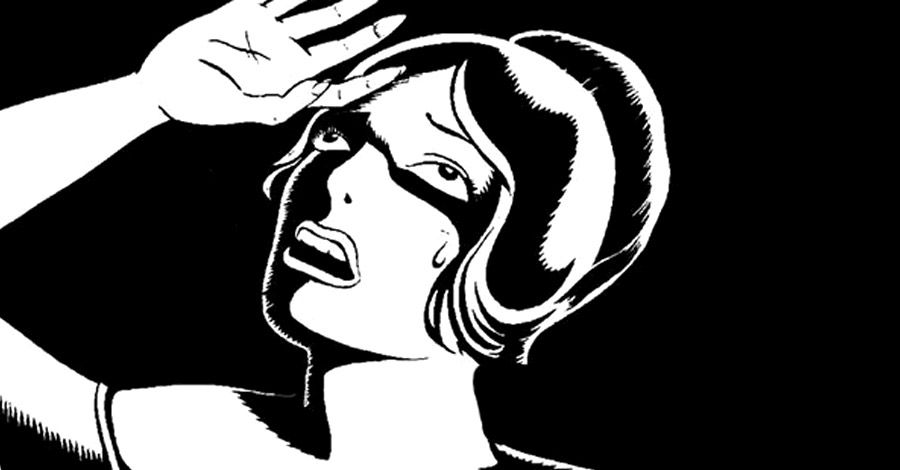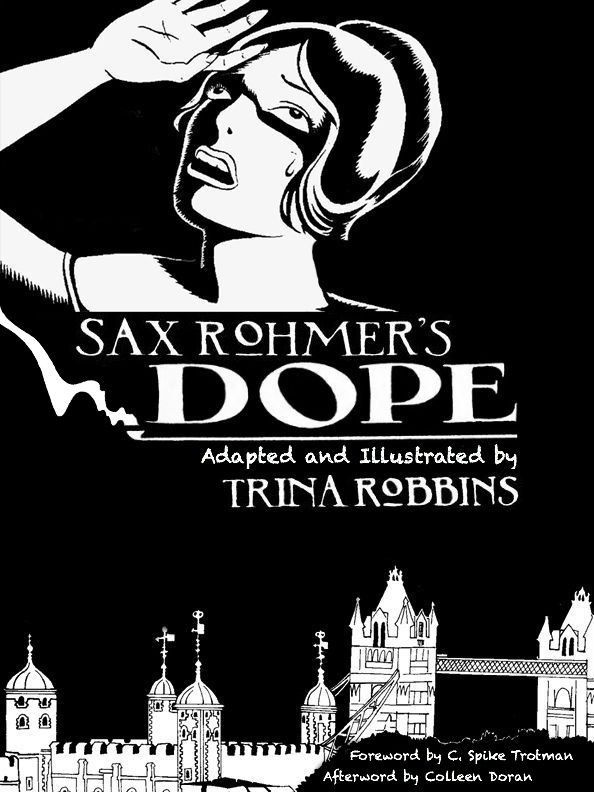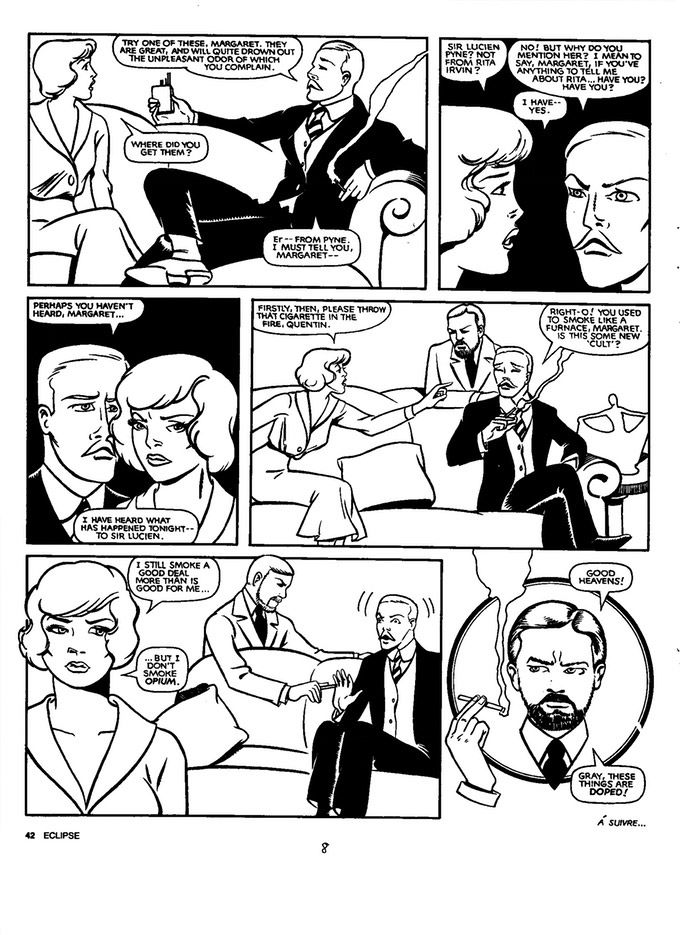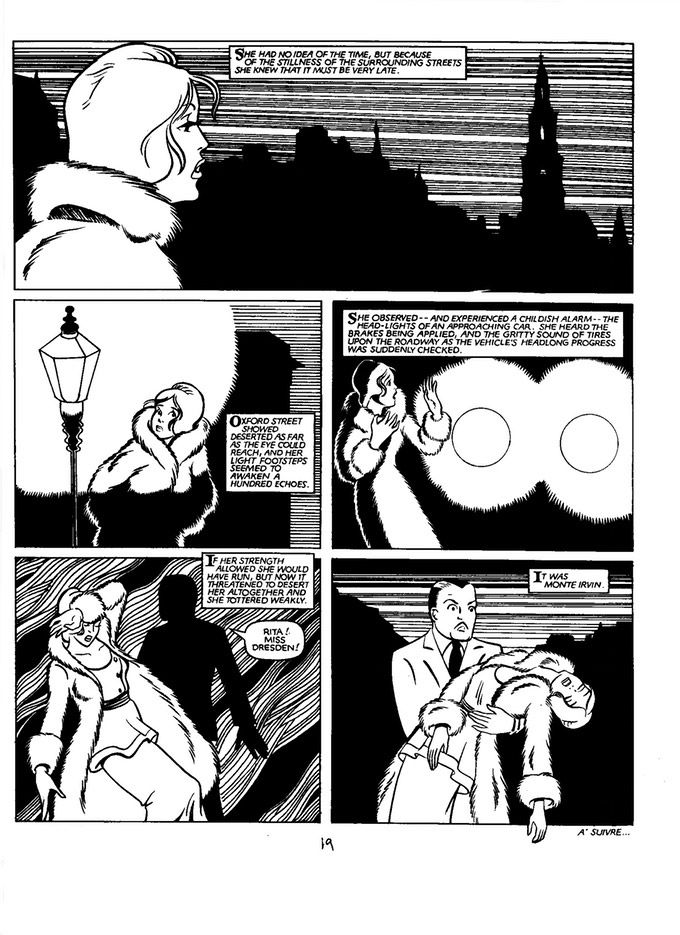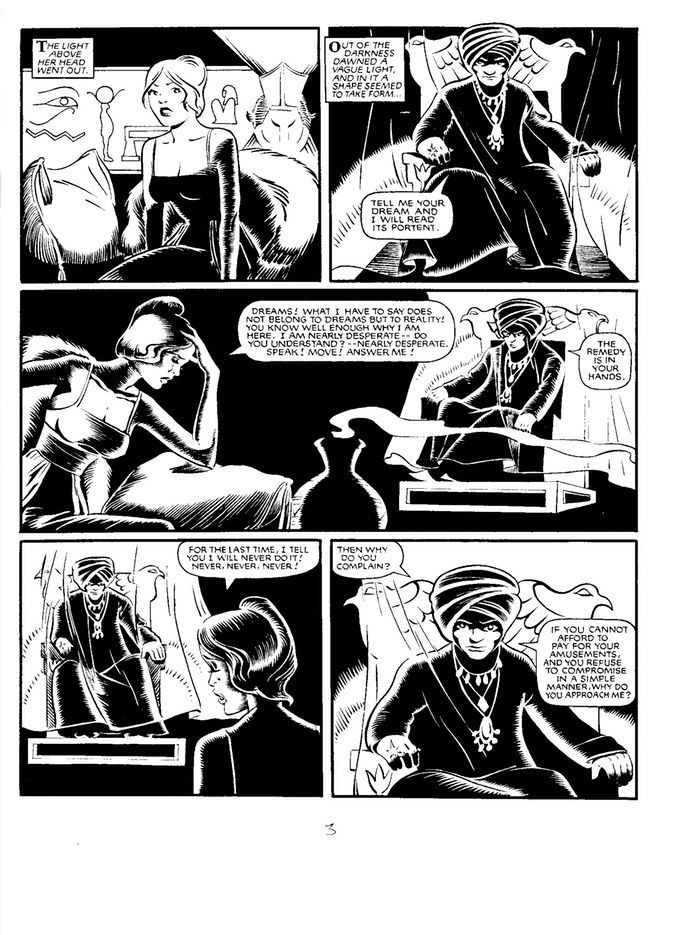What a long, strange trip it's been: "Dope" was written in 1919, discovered by Trina Robbins in a used bookstore the 1970s, turned into a comic in the 1980s, and is finally being collected into a graphic novel next year.
RELATED: IDW To Resurrect Out-of-Print Comics Under "It's Alive!" Imprint
"Dope" is a pulp novel about drugs, murder, and celebrities in early 20th-Century London. Drew Ford, who helms the IDW Publishing imprint It's Alive!, is packaging Robbins' adaptation in graphic novel format, and he is running a Kickstarter to pay for production costs. The comic was originally published as single chapters in Eclipse Comics anthologies, so part of the production process includes scanning and resizing those old pages and, in some places, removing the colors, so the whole book will be uniform. Other than that, the comic will appear as it was originally presented -- Robbins has not rewritten or redrawn anything -- with a foreword by C. Spike Trotman, an introduction by Robbins, and an afterword by Colleen Doran. The Kickstarter wraps August 19, and the premiums include original art by Robbins, Doran, and a host of other artists, including Rufus Dayglo, Larry Hama, Al Milgrom and Shannon Wheeler.
The original novel is the work of pulp novelist Sax Rohmer, the creator of the villain Fu Manchu. "Dope" is loosely based on the story of the British actress Billie Carleton, who died of a drug overdose in 1918. Carleton was on the cusp of success when she passed away immediately after a huge society ball celebrating the end of World War I, and the inquest and trial were followed with breathless interest by the tabloid press of the time. There was talk of orgies and "unholy rites," as well as cocaine and opium use. Eventually, a fashion designer and a Chinese immigrant and his Scottish wife were convicted of crimes connected to the death.
Sometime in the 1970s, Robbins picked up the book for a dollar at a San Francisco bookstore that was going out of business. It was a while before the book made it to the top of her reading stack, but as soon as she read it, she said, "I thought, 'Oh, my God, this would make such a comic!'"
"It takes place in 1919," Robbins said. "A beautiful actress is seduced into taking drugs and becomes addicted to drugs -- of course! There are opium dens and weird opium dreams and murder and a mysterious Chinese guy named Sin Sin Wa, and an evil but beautiful [woman] -- she's referred to as a Cuban Jewess -- who is married to him, Mrs. Sin. And of course there's our British detective, who solves the whole thing. And -- what can I say -- it's blood and thunder!"
The tabloid coverage of the Carleton case and the book itself reflect the attitudes of the times, and although Sin Sin Wa is no Fu Manchu, parts of "Dope" may strike a dissonant chord for modern readers. "I think we have to be aware that there was racism (and anti-Semitism and sexism) back in the day," Robbins said. "If we are to dismiss all the writing in the past that contains all those isms, then poof! There goes 'The Merchant of Venice,' there goes 'Oliver Twist,' there goes even 'The Great Gatsby,' which has a very stereotyped Jew in it. There goes Will Eisner, there go all those Golden Age wartime comics that portray Japanese people as bright-yellow, fanged monsters.When a local theater group performed 'The Taming of the Shrew' in the park, I went to see it with a group of lesbians, and we laughed through much of the performance. Mark Twain writes that he hates Indians even more than he hates 'Chinamen.'But still I love Mark Twain."
Robbins plans to address this issue in her introduction to the book, but she adds that Sin Sin Wa is no mere stereotypical villain. "In fact, he is my favorite character," she said, and she suspects Rohmer was partial to him as well.
The first edition of Robbins' adaptation was published by Eclipse Comics in the early '80s. "I spent most of the '70s pushing my way into the comics industry because it was such a boys' club, but Eclipse was different," said Robbins. "It was Cat Yronwode and Dean Mullaney -- he was the publisher and she was the editor, and she was a woman. I don't think anyone else would have published this." Chapters of "Dope" ran in the anthology "Eclipse Magazine," which later became "Eclipse Monthly," from 1981 to 1983, but it has never been collected into a graphic novel.
"It's beautiful," Robbins said. "You know, when I look back on 'Dope' I realize that the '80s, which is when I did this, is actually one of my best, maybe my very best, periods. I really perfected my art, and my inking was fabulous, and the whole thing looks really, really good.
"It's a good story," she continued. "It's a rip-roaring story. Nobody writes like that any more, and it's really well drawn because it was my work at my peak, and I was absolutely at my best when it comes to art. It makes a nice little book."
Robbins has been busy: In addition to "Dope," which will be published in January 2017, she has three more books in the works for next year: Her memoir, "Last Girl Standing," to be published by Fantagraphics; "Babes in Arms," from Hermes Press a collection of work by four women cartoonists of the Golden Age; and "A Minyan Yidn un andere zacken" (loosely translated: "A Bunch of Jews and other stuff") Robbins' translation of a collection of short stories written in Yiddish by her father, illustrated by a "dream team" of artists and published by Bedside Press.

